Abstract
The serum concentrations of the radiosensitizer metronidazole have been determined in mice for both oral and intraperitoneal doses of the drug and these have been related to radiosensitization studies in murine tumour systems. In preliminary work before a possible clinical trail the serum metronidazole concentration/time curves have been determined in 7 patients using single doses of metronidazole of up to 15 g. The data suggest that a linear relationship exists between the metronidazole dose expressed in mg/kg and the peak serum concentration. The possibility of achieving radiosensitization of tumours in patients after tolerable doses of metronidazole is discussed in relation to enhancement ratios determined for in vitro and in vivo systems. It is concluded that predictions from in vitro systems give values that are probably too optimistic.
Full text
PDF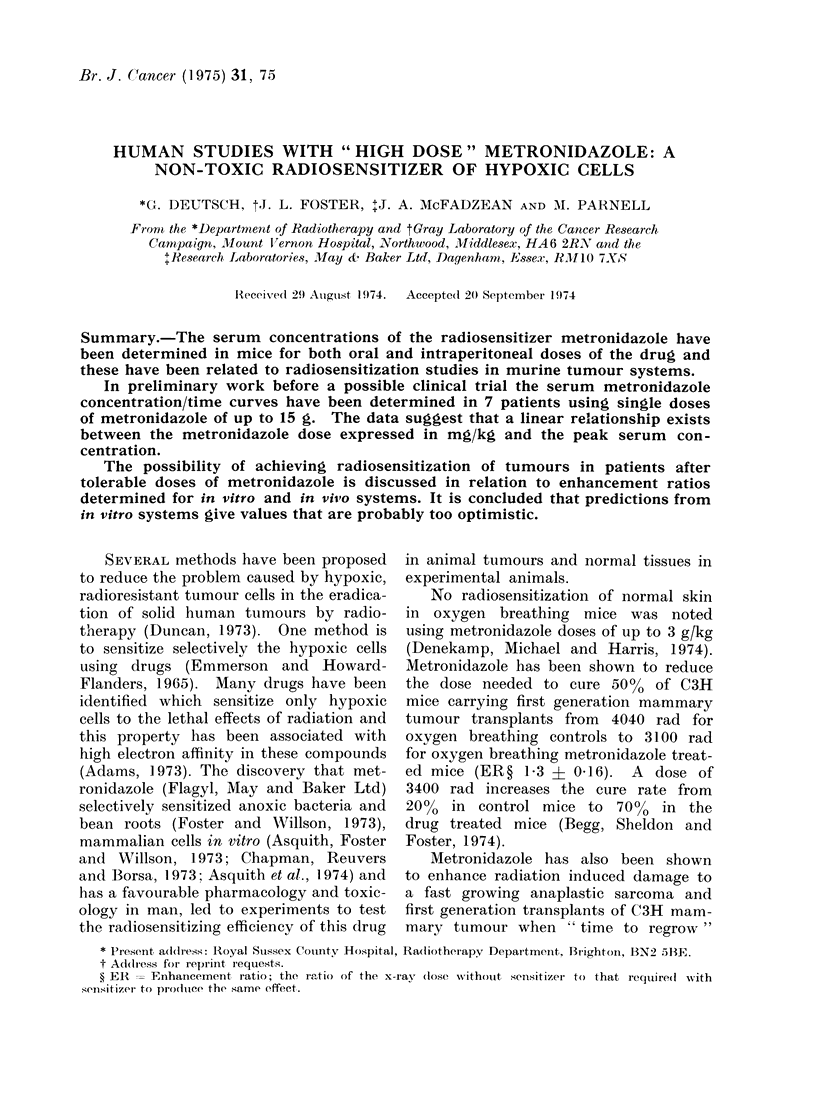
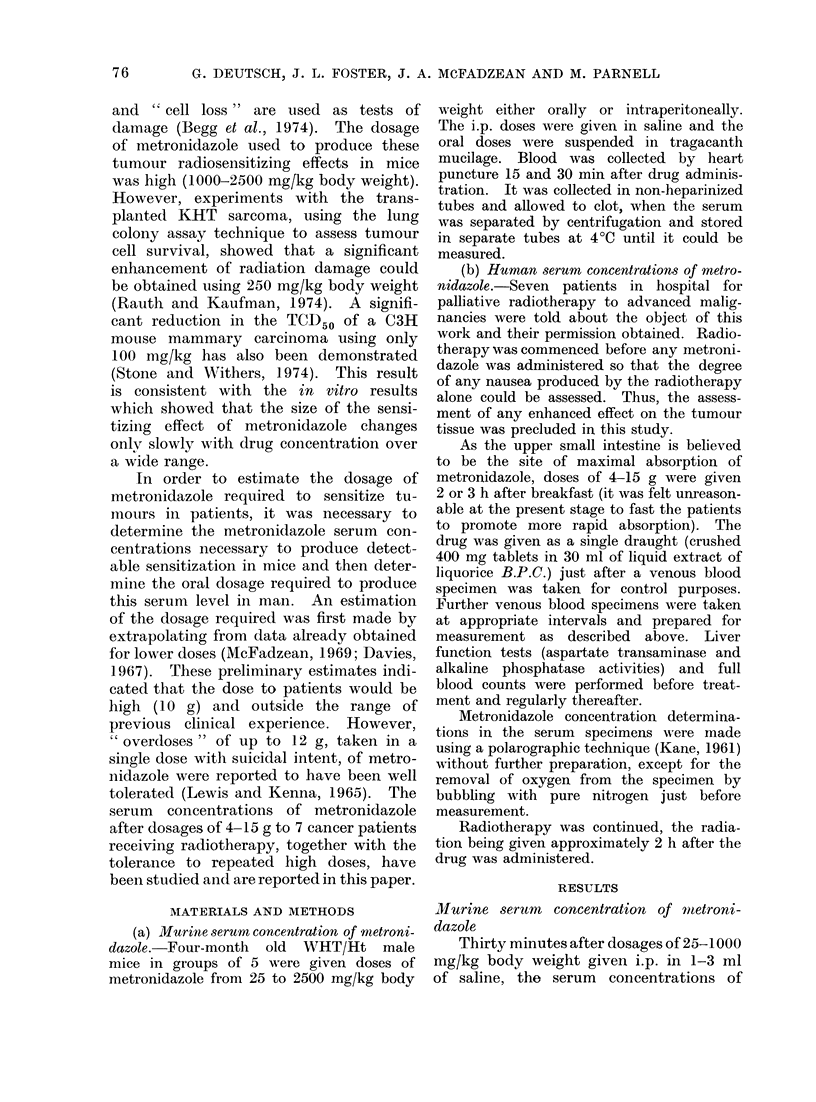
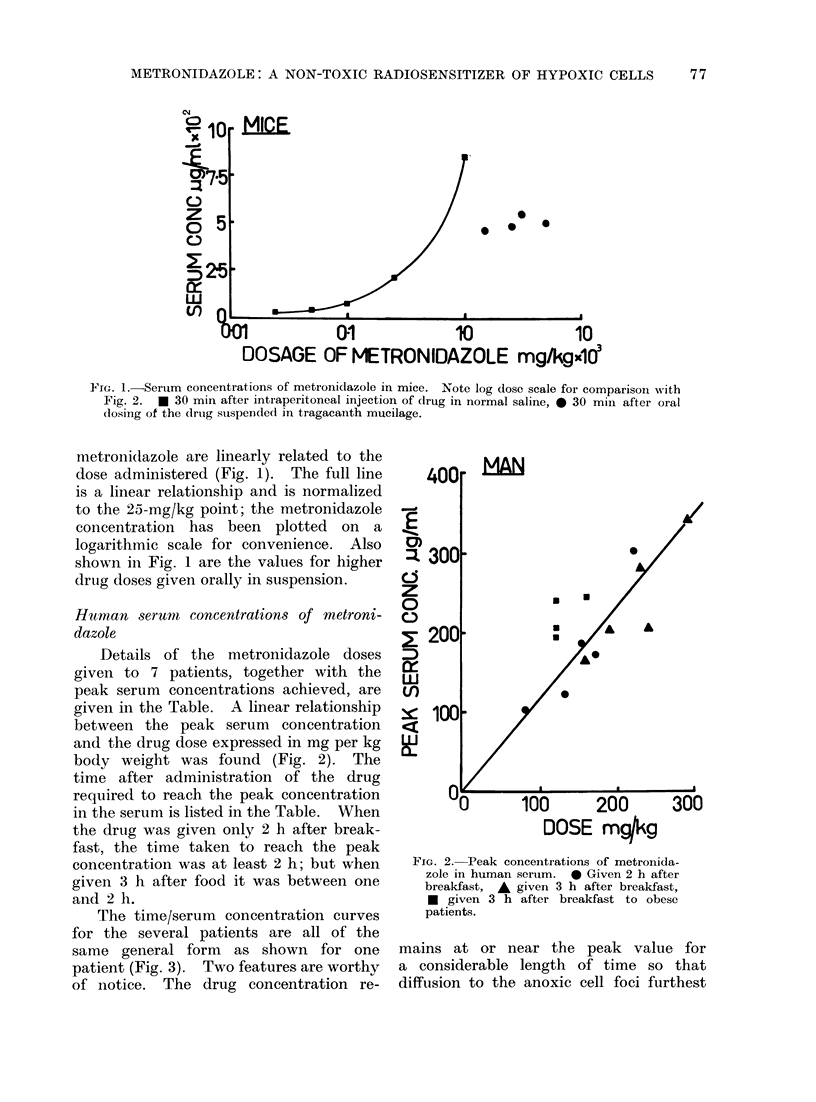
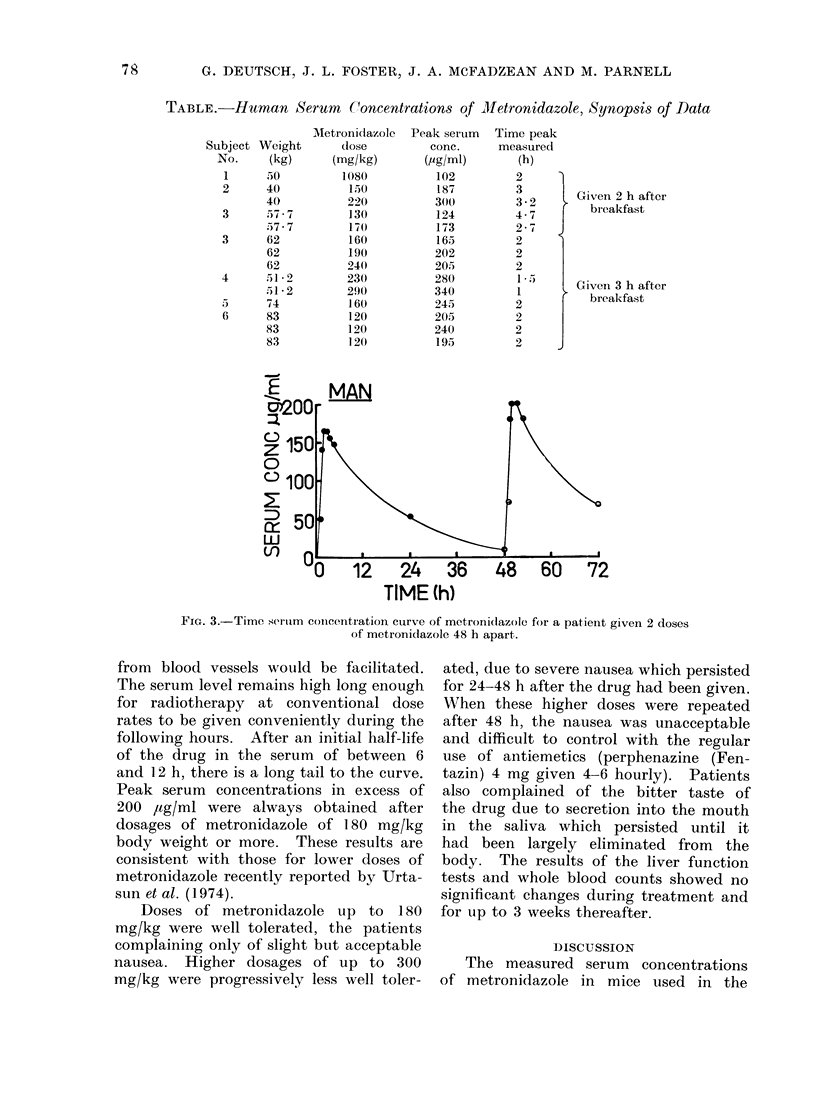
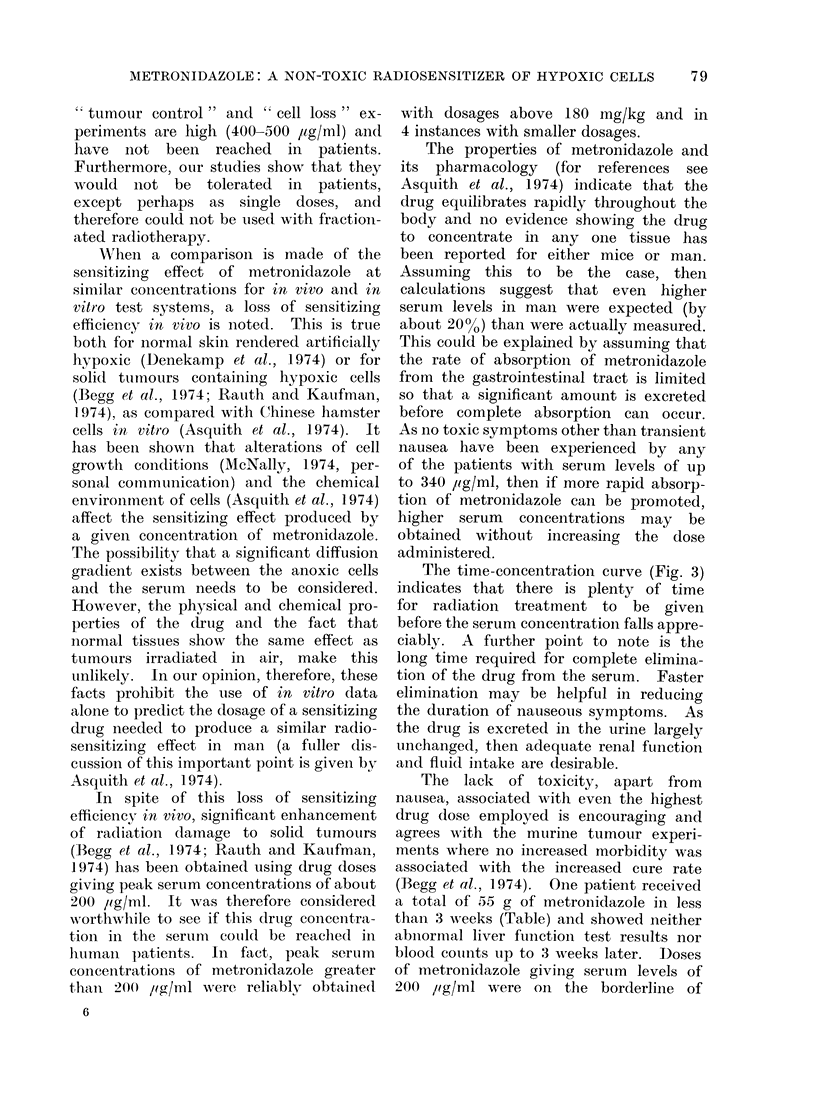
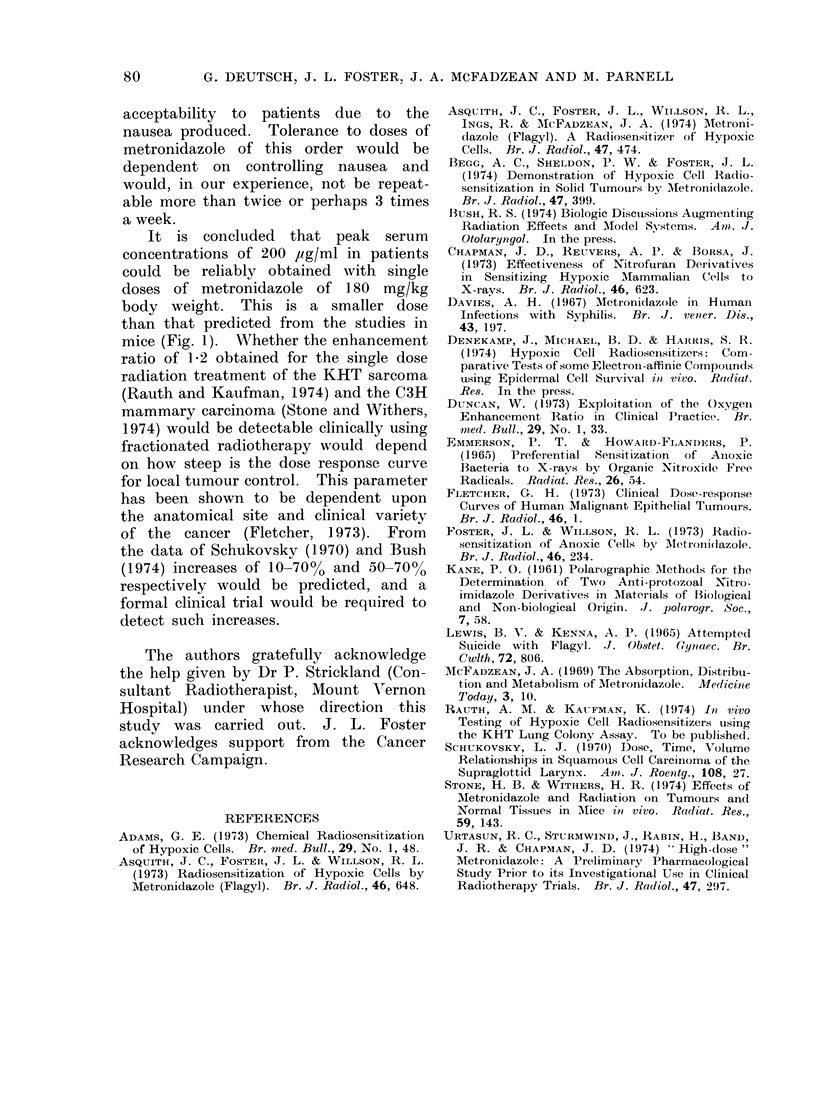
Selected References
These references are in PubMed. This may not be the complete list of references from this article.
- Asquith J. C., Foster J. L., Willson R. L., Ings R., McFadzean J. A. Metronidazole ("Flagyl"). A radiosensitizer of hypoxic cells. Br J Radiol. 1974 Aug;47(560):474–481. doi: 10.1259/0007-1285-47-560-474. [DOI] [PubMed] [Google Scholar]
- Asquith J. C., Foster J. L., Willson R. L. Radiosensitization of hypoxic cells by metronidazole (Flagyl). Br J Radiol. 1973 Aug;46(548):648–648. [PubMed] [Google Scholar]
- Begg A. C., Sheldon P. W., Foster J. L. Demonstration of radiosensitization of hypoxic cells in solid tumours by metronidazole. Br J Radiol. 1974 Jul;47(559):399–404. doi: 10.1259/0007-1285-47-559-399. [DOI] [PubMed] [Google Scholar]
- Chapman J. D., Reuvers A. P., Borsa J. Effectiveness of nitrofuran derivatives in sensitizing hypoxic mammalian cells to x rays. Br J Radiol. 1973 Aug;46(548):623–630. doi: 10.1259/0007-1285-46-548-623. [DOI] [PubMed] [Google Scholar]
- Davies A. H. Metronidazole in human infections with syphilis. Br J Vener Dis. 1967 Sep;43(3):197–200. doi: 10.1136/sti.43.3.197. [DOI] [PMC free article] [PubMed] [Google Scholar]
- Emmerson P. T., Howard-Flanders P. Preferential sensitization of anoxic bacteria to x-rays by organic nitroxide-free radicals. Radiat Res. 1965 Sep;26(1):54–62. [PubMed] [Google Scholar]
- Fletcher G. H. Clinical dose-response curves of human malignant epithelial tumours. Br J Radiol. 1973 Jan;46(541):1–12. doi: 10.1259/0007-1285-46-541-1. [DOI] [PubMed] [Google Scholar]
- Foster J. L., Willson R. L. Radiosensitization of anoxic cells by metronidazole. Br J Radiol. 1973 Mar;46(543):234–235. doi: 10.1259/0007-1285-46-543-234. [DOI] [PubMed] [Google Scholar]
- Lewis B. V., Kenna A. P. Attempted suicide with flagyl. J Obstet Gynaecol Br Commonw. 1965 Oct;72(5):806–807. doi: 10.1111/j.1471-0528.1965.tb00106.x. [DOI] [PubMed] [Google Scholar]
- Urtasun R. C., Sturmwind J., Rabin H., Band P. R., Chapman J. D. Letter: "High-dose" metronidazole: a preliminary pharmacological study prior to its investigational use in clinical radiotherapy trials. Br J Radiol. 1974 May;47(557):297–299. doi: 10.1259/0007-1285-47-557-297-c. [DOI] [PubMed] [Google Scholar]


